
Discover the Elegance of Civil Lines, Jabalpur
Explore the historic allure and modern charm of Civil Lines in Jabalpur, a perfect blend of colonial elegance, cultural richness, and contemporary leisure.
Civil Lines in Jabalpur is a blend of historical charm and modern-day vibrance. It is one of the city’s most prestigious neighborhoods, known for its tree-lined avenues, colonial-era bungalows, and a tranquil atmosphere that offers a respite from the bustling city life. As you stroll through Civil Lines, you’ll be transported back to the British era, with its well-maintained gardens and heritage structures that tell tales of a bygone time. The area is not just about history; it’s also a hub for culture and leisure. You will find several museums, art galleries, and cultural centers that showcase the rich heritage of Jabalpur. The Rani Durgavati Museum is a must-visit, offering an extensive collection of sculptures, inscriptions, and prehistoric relics. The neighborhood is also home to some of the city’s best cafes and restaurants, where you can savor both traditional Indian cuisine and contemporary dishes. For those who enjoy shopping, Civil Lines has an array of boutique stores and local markets. From handcrafted souvenirs to fashionable attire, there’s something for everyone. The neighborhood is also ideal for evening strolls, with its well-lit streets and serene ambiance. Whether you’re a history buff, a culture enthusiast, or someone looking to relax, Civil Lines in Jabalpur offers a unique and enriching experience.
Local tips in Civil Lines
- Visit the Rani Durgavati Museum for a deep dive into the region's history and culture.
- Take an evening stroll along the tree-lined avenues to enjoy the serene ambiance.
- Try local cuisine at one of the neighborhood's renowned cafes and restaurants.
- Explore the local markets and boutique stores for unique souvenirs and gifts.
Discover the Elegance of Civil Lines, Jabalpur
Civil Lines in Jabalpur is a blend of historical charm and modern-day vibrance. It is one of the city’s most prestigious neighborhoods, known for its tree-lined avenues, colonial-era bungalows, and a tranquil atmosphere that offers a respite from the bustling city life. As you stroll through Civil Lines, you’ll be transported back to the British era, with its well-maintained gardens and heritage structures that tell tales of a bygone time. The area is not just about history; it’s also a hub for culture and leisure. You will find several museums, art galleries, and cultural centers that showcase the rich heritage of Jabalpur. The Rani Durgavati Museum is a must-visit, offering an extensive collection of sculptures, inscriptions, and prehistoric relics. The neighborhood is also home to some of the city’s best cafes and restaurants, where you can savor both traditional Indian cuisine and contemporary dishes. For those who enjoy shopping, Civil Lines has an array of boutique stores and local markets. From handcrafted souvenirs to fashionable attire, there’s something for everyone. The neighborhood is also ideal for evening strolls, with its well-lit streets and serene ambiance. Whether you’re a history buff, a culture enthusiast, or someone looking to relax, Civil Lines in Jabalpur offers a unique and enriching experience.
Iconic landmarks you can’t miss
Tagore Garden
Explore the tranquil beauty of Tagore Garden in Jabalpur, a serene escape filled with lush greenery and cultural charm, perfect for relaxation and exploration.
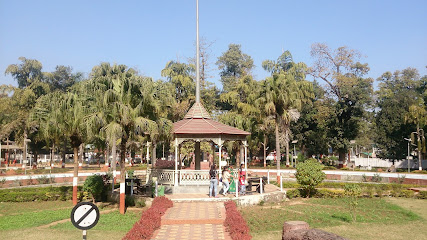
Ghanta ghar
Discover Ghanta Ghar, an iconic historical landmark in Jabalpur that blends rich heritage with vibrant local culture, perfect for every traveler.

Balancing Rock
Discover the marvel of Balancing Rock in Jabalpur, a stunning geological wonder that captivates with its natural beauty and serene surroundings.
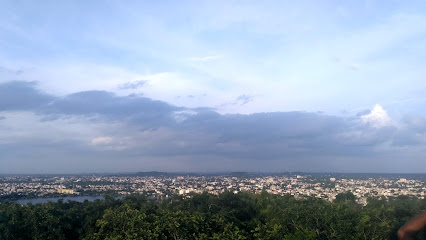
Rani Durgavati Fort & Museum
Discover the rich history and cultural treasures of Madhya Pradesh at Rani Durgavati Fort & Museum, a must-visit tourist attraction in Jabalpur.

Rani Durgawati Fort
Explore the majestic Rani Durgawati Fort in Jabalpur, a historical gem offering stunning architecture and breathtaking views of Madhya Pradesh's landscapes.

Raja Shankar Shah & Raghunath Shah Statue
Explore Jabalpur's rich heritage at the Raja Shankar Shah & Raghunath Shah Statue, a majestic tribute to India's courageous warriors.

War Memorial
Explore the War Memorial in Jabalpur, a historical landmark honoring the bravery of soldiers amidst serene gardens and stunning architecture.
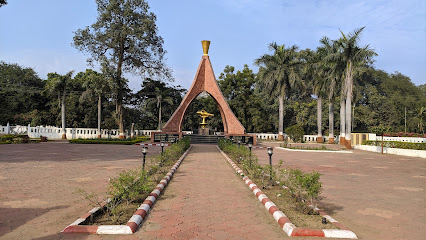
Sarafa-Nunhai Square
Experience the rich history and vibrant street food scene at Sarafa-Nunhai Square, a cultural gem in Jabalpur, Madhya Pradesh.

Yadgar War Memorial
Explore the Yadgar War Memorial in Jabalpur, a solemn tribute honoring India's brave soldiers amidst serene landscapes and rich history.

DEERS' STATUE Jabalpur railway staion
Discover the enchanting Deers' Statue at Jabalpur Railway Station, a charming symbol of nature and culture that welcomes travelers to Madhya Pradesh.

Unmissable attractions to see
DEERS' STATUE Jabalpur railway staion
Explore the Deers' Statue at Jabalpur Railway Station, a charming landmark symbolizing local culture and perfect for memorable travel photography.

Central Jail Lake
Explore the serene beauty and rich history of Central Jail Lake in Jabalpur, Madhya Pradesh, an unforgettable tourist attraction.

Pond view point
Discover the tranquil beauty of Pond View Point in Jabalpur, where serene waters meet lush landscapes for an unforgettable escape.

Rashtra Kavi Maithili Sharan Gupt Statue
Explore the Rashtra Kavi Maithili Sharan Gupt Statue in Jabalpur, a cultural gem honoring the literary legacy of one of India's greatest poets.

Essential places to dine
Asanzo.
Experience the best vegetarian fast food at Asanzo in Jabalpur - where flavor meets convenience!

Desi Twist
Experience the best of Indian fast food at Desi Twist in Jabalpur - where traditional flavors meet modern dining.

Bun in a million
Savor American fast food delights at Bun in a Million, Jabalpur's favorite spot for burgers and fries.
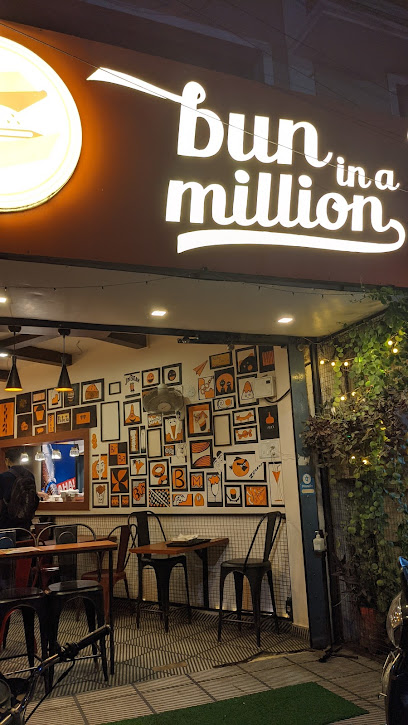
24x7 Feed Your Soul
Discover culinary bliss at Jabalpur's unique railway-themed restaurant, offering round-the-clock service and delectable dishes in a charming setting.

Manmohan Veg Restaurant & Thali
Experience authentic vegetarian dining at Manmohan Veg Restaurant & Thali in Jabalpur – where every meal tells a story of flavor.

Spicy Bite's Cafe & Restaurants
Discover authentic Indian cuisine at Spicy Bite's Cafe & Restaurants in Jabalpur – where every meal is a flavorful adventure.
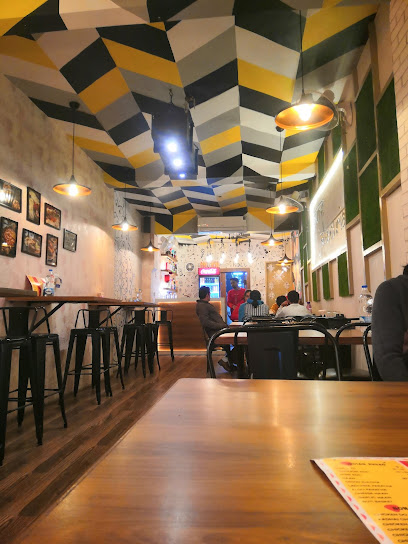
Krishna Restaurant
Discover authentic Indian flavors at Krishna Restaurant in Jabalpur – where every meal is a celebration of taste.
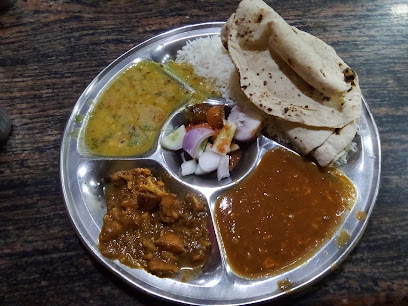
Chaupal Cafe & Fine Dine चौपाल Cafe & Fine Dine
Experience culinary excellence at Chaupal Cafe & Fine Dine in Jabalpur, where authentic flavors meet contemporary dining in a welcoming atmosphere.
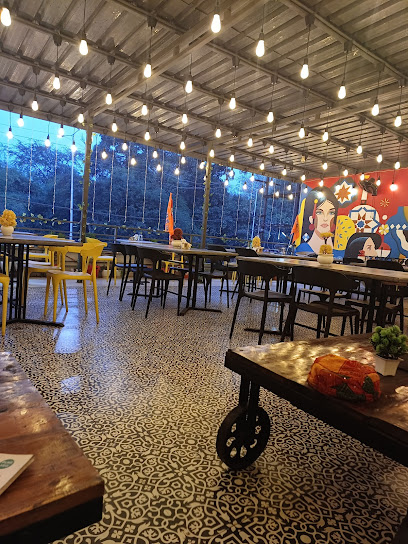
Nature’s Tavern North Civil Lines
Discover delightful vegetarian cuisine at Nature's Tavern North Civil Lines - where taste meets tranquility in Jabalpur.

Ansari Restaurant
Experience delicious fast food at Ansari Restaurant in Jabalpur - where traditional flavors meet modern convenience.

Markets, malls and hidden boutiques
Southern Stores
Explore the rich flavors of Southern India at Southern Stores - your go-to grocery store in Jabalpur for authentic culinary delights.
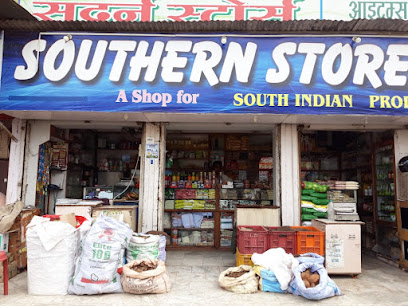
Fabindia, Sadar
Experience the essence of Indian craftsmanship at Fabindia, Sadar, where tradition meets contemporary style in a vibrant shopping environment.

Pantaloons (Silver Jubliee, Jabalpur)
Explore Pantaloons in Jabalpur for a diverse range of stylish clothing for the whole family, from casual to formal wear.
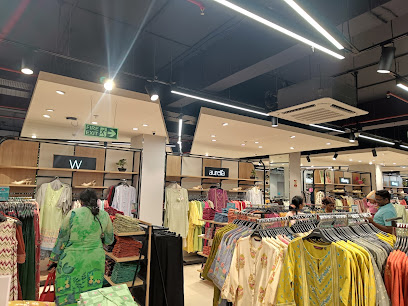
Pooja Collection
Explore the vibrant styles of Pooja Collection, a premier clothing boutique in Jabalpur showcasing unique fashion and local craftsmanship.

Raja Fancy Stores
Explore Raja Fancy Stores in Jabalpur – your go-to destination for unique gifts, cosmetics, and stationery that capture the essence of Indian culture.

Clipper's
Discover trendy women's fashion at Clipper's in Jabalpur, where style meets tradition in every unique piece.

Sangini Boutique
Explore Sangini Boutique in Jabalpur for unique clothing that blends contemporary style with local cultural flair, perfect for every occasion.
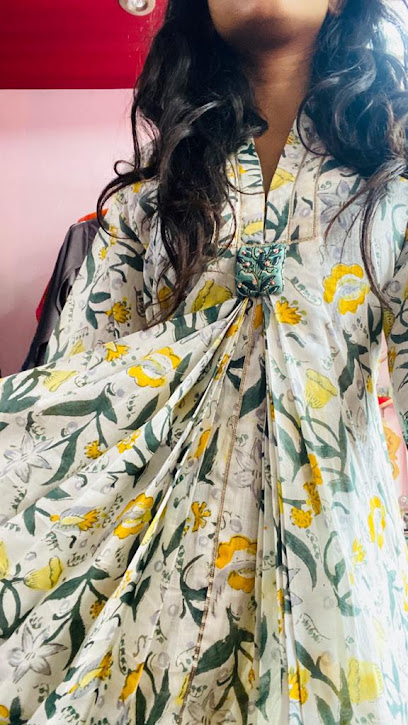
The Arvind Store
Discover a diverse range of quality clothing at The Arvind Store in Jabalpur, where fashion meets affordability and style.
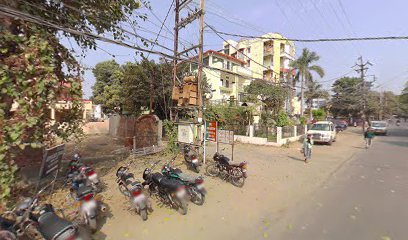
Eva's Creation
Explore the charm of Jabalpur at Eva's Creation, a delightful gift shop offering unique handcrafted treasures and local artistry.
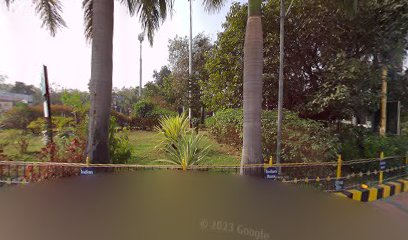
Nikki Pan Shope
Experience the authentic flavors of Jabalpur at Nikki Pan Shope – a must-visit for food lovers and cultural enthusiasts.

Essential bars & hidden hideouts
Smoky Brew
Experience the vibrant atmosphere and diverse menu at Smoky Brew, the perfect café and bar destination in Gorakhpur.

24x7 Feed Your Soul
Experience the charm of dining in a railway coach at 24x7 Feed Your Soul in Jabalpur, offering delicious dishes around the clock.
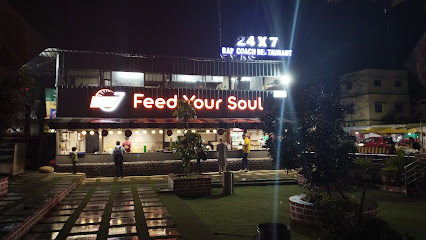
The Burger Company | Best restaurant in Jabalpur
Experience the ultimate burger adventure at The Burger Company, Jabalpur's premier fast food destination with gourmet flavors and a vibrant atmosphere.

One Mile
Discover Jabalpur's culinary gem, One Mile, where grilling perfection meets a vibrant atmosphere for an unforgettable dining experience.

Vini's Bar
Experience the vibrant nightlife at Vini's Bar in Jabalpur, offering an impressive selection of drinks and delicious food in a welcoming atmosphere.

Hakka Tequila
Experience the lively atmosphere and creative cocktails at Hakka Tequila, Jabalpur's premier bar for a vibrant night out.

Madira Bar and Lounge
Experience the vibrant atmosphere and delightful flavors at Madira Bar and Lounge in Jabalpur, a perfect retreat for relaxation and entertainment.

Bevvy & Nosh
Experience the best of Jabalpur's culinary scene at Bevvy & Nosh, where vibrant atmosphere meets exquisite flavors.

Madhushala Restaurant and Bar
Experience the vibrant flavors and lively atmosphere at Madhushala Restaurant and Bar, the top dining destination in Jabalpur, Madhya Pradesh.

Digvijay Palace - Bar
Indulge in an exquisite blend of grilled flavors and vibrant ambiance at Digvijay Palace - Bar, Jabalpur's premier dining and nightlife destination.

Local Phrases
-
- Helloनमस्ते
[namaste] - Goodbyeअलविदा
[alvida] - Yesहां
[haan] - Noनहीं
[nahin] - Please/You're welcomeकृपया
[krupaya] - Thank youधन्यवाद
[dhanyavaad] - Excuse me/Sorryमाफ़ कीजिए
[maaf keejiye] - How are you?कैसे हो आप?
[kaise ho aap?] - Fine. And you?ठीक हूँ। आप?
[theek hoon. aap?] - Do you speak English?क्या आप अंग्रेज़ी बोलते हैं?
[kya aap angrezi bolte hain?] - I don't understandमुझे समझ नहीं आया
[mujhe samajh nahin aaya]
- Helloनमस्ते
-
- I'd like to see the menu, pleaseकृपया मेन्यू दिखाइए
[krupaya menu dikhaiye] - I don't eat meatमुझे मांस नहीं खाना
[mujhe maans nahin khana] - Cheers!चियर्स!
[cheers!] - I would like to pay, pleaseकृपया भुगतान करना है
[krupaya bhugtaan karna hai]
- I'd like to see the menu, pleaseकृपया मेन्यू दिखाइए
-
- Help!बचाओ!
[bachao!] - Go away!चले जाओ!
[chale jao!] - Call the Police!पुलिस को बुलाओ!
[police ko bulaao!] - Call a doctor!डॉक्टर को बुलाओ!
[doctor ko bulaao!] - I'm lostमैं खो गया/गई हूँ
[main kho gaya/gayi hoon] - I'm illमुझे बीमारी है
[mujhe bimaari hai]
- Help!बचाओ!
-
- I'd like to buy...मैं ... खरीदना चाहता/चाहती हूँ
[main ... khareedna chahta/chahti hoon] - I'm just lookingमैं सिर्फ देख रहा/रही हूँ
[main sirf dekh raha/rahi hoon] - How much is it?यह कितने का है?
[yah kitne ka hai?] - That's too expensiveयह बहुत महंगा है
[yah bahut mahnga hai] - Can you lower the price?क्या आप कीमत कम कर सकते हैं?
[kya aap keemat kam kar sakte hain?]
- I'd like to buy...मैं ... खरीदना चाहता/चाहती हूँ
-
- What time is it?अब कितने बजे हैं?
[ab kitne baje hain?] - It's one o'clockएक बजे हैं
[ek baje hain] - Half past (10)दस बजे तक
[das baje tak] - Morningसुबह
[subah] - Afternoonदोपहर
[dopahar] - Eveningशाम
[shaam] - Yesterdayकल
[kal] - Todayआज
[aaj] - Tomorrowकल
[kal] - 1एक
[ek] - 2दो
[do] - 3तीन
[teen] - 4चार
[chaar] - 5पांच
[paanch] - 6छह
[chhah] - 7सात
[saat] - 8आठ
[aath] - 9नौ
[nau] - 10दस
[das]
- What time is it?अब कितने बजे हैं?
-
- Where's a/the...?...कहाँ है?
[...kahan hai?] - What's the address?पता क्या है?
[pata kya hai?] - Can you show me (on the map)?क्या आप मुझे दिखा सकते हैं (नक्शे पर)?
[kya aap mujhe dikha sakte hain (naksha par)?] - When's the next (bus)?अगली (बस) कब है?
[agli (bus) kab hai?] - A ticket (to ....)एक टिकट (... के लिए)
[ek ticket (... ke liye)]
- Where's a/the...?...कहाँ है?
History of Civil Lines
-
Civil Lines is characterized by its colonial architecture, which dates back to the British Raj. Established in the late 19th century, this area was primarily developed to house British officials and their families, reflecting the architectural styles of the time. The presence of wide boulevards, large bungalows, and well-maintained gardens speaks to the affluence of the colonial era, making it a significant historical neighborhood in Jabalpur.
-
Civil Lines played a notable role during India's struggle for independence. The area became a hub for nationalist activities, with local leaders organizing meetings and rallies to mobilize support against British rule. The proximity of Civil Lines to important institutions in Jabalpur made it a strategic location for political discourse and activism, contributing to the larger narrative of the freedom movement in the region.
-
After India gained independence in 1947, Civil Lines continued to evolve as a residential and administrative center. The area saw an influx of people from various regions, leading to a diverse cultural tapestry. The establishment of several educational institutions and government offices in Civil Lines further cemented its importance as a central hub in Jabalpur, reflecting the post-colonial aspirations of the nation.
-
Today, Civil Lines is a vibrant neighborhood that reflects a blend of historical and modern influences. It is home to various cultural events, art galleries, and culinary delights that showcase the local heritage. The area's historical significance, combined with contemporary developments, creates a unique urban identity that attracts both residents and visitors alike.
-
The architectural landscape of Civil Lines includes several heritage buildings that are reflective of the Indo-Saracenic style, a fusion of Indian and Islamic architectural elements popular during the British era. Notable structures, such as the Jabalpur Collectorate and various old bungalows, offer insights into the architectural trends of the time and are protected as part of the region's cultural heritage.
Civil Lines Essentials
-
Civil Lines is centrally located in Jabalpur, making it accessible from various parts of the city. If you're arriving from the Jabalpur Railway Station, you can take a local auto-rickshaw or taxi, which will take approximately 15-20 minutes. For those coming from the Dumna Airport, a taxi service is available, and the drive will take around 30-40 minutes. Local buses also connect Civil Lines to other neighborhoods, providing an economical option for travelers.
-
Civil Lines is best explored on foot, as many attractions are within walking distance. Auto-rickshaws are a popular and convenient way to navigate the area, with rides being relatively inexpensive. Bicycles can also be rented from nearby shops for a leisurely ride around the neighborhood. For longer distances, local buses are available, but they can be crowded during peak hours.
-
Civil Lines is generally safe for tourists; however, it is advisable to exercise caution, especially at night. Areas with higher crime rates include parts of the nearby old city. It is advisable to stay alert, avoid displaying valuables, and refrain from walking alone in poorly lit areas after dark.
-
In case of an emergency, dial 100 for police assistance and 108 for ambulance services. Local hospitals, such as Jabalpur Hospital, are equipped to handle emergencies. It is recommended to have travel insurance that covers medical emergencies. Familiarize yourself with the nearest medical facilities upon arrival.
-
Fashion: Do dress modestly, especially in religious sites. Avoid wearing shorts or revealing clothing. Religion: Do respect local customs and traditions; remove shoes before entering temples. Public Transport: Do give up your seat to the elderly and be courteous. Don't eat or drink on public transportation. Greetings: Do greet locals with a polite 'Namaste' and a smile. Eating & Drinking: Do try local street food and accept hospitality graciously. Don't waste food or refuse an offered meal, as it may be considered impolite.
-
To experience Civil Lines like a local, visit the vibrant markets where you can find traditional handicrafts and local delicacies. Engage with shopkeepers, as they often share stories about Jabalpur's history. Make sure to try the famous 'chaat' from local stalls. For a unique experience, attend a local festival if your visit coincides with one, as it offers insight into the cultural richness of the area.
Nearby Cities to Civil Lines
-
Things To Do in Nagpur
-
Things To Do in Bhopal
-
Things To Do in Raipur
-
Things To Do in Kanpur
-
Things To Do in Gwalior
-
Things To Do in Varanasi
-
Things To Do in Lucknow
-
Things To Do in Ranthambore
-
Things To Do in Agra
-
Things To Do in Ranchi
-
Things To Do in Patna
-
Things To Do in Jaipur
-
Things To Do in Lumbini
-
Things To Do in Aurangabad
-
Things To Do in Udaipur






